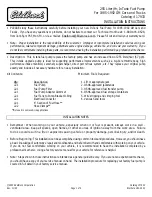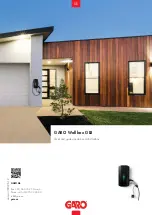
driving (driver assistance systems). In addition,
your vehicle provides comfort and entertainment
functions, which are also made possible by elec‐
tronic control units.
Electronic control units contain data memories
which can temporarily or permanently store
technical information about the vehicle's operat‐
ing state, component loads, maintenance
requirements and technical events or faults.
In general, this information documents the state
of a component part, a module, a system or the
surroundings such as:
R
operating status of system components (e.g.
fill levels, battery status, tyre pressure)
R
status messages concerning the vehicle or
its individual components (e.g. number of
wheel revolutions/speed, longitudinal accel‐
eration, lateral acceleration, display of fas‐
tened seat belts)
R
malfunctions or faults in important system
components (e.g. lights, brakes)
R
information on events leading to vehicle
damage
R
system reactions in special driving situations
(e.g. airbag deployment, intervention of sta‐
bility control systems)
R
ambient conditions (e.g. temperature, rain
sensor)
In addition to providing the actual control unit
function, this data assists the manufacturer in
detecting and rectifying faults and optimising
vehicle functions. The majority of this data is
temporary and is only processed in the vehicle
itself. Only a small portion of the data is stored
in the event or fault memory.
When your vehicle is serviced, technical data
from the vehicle can be read out by service net‐
work employees (e.g. workshops, manufactur‐
ers) or third parties (e.g. breakdown services).
Services include repair services, maintenance
processes, warranty claims and quality assur‐
ance measures, for example. The read out is per‐
formed via the legally prescribed port for the
diagnostics connection in the vehicle. The
respective service network locations or third
parties collect, process and use the data. They
document technical statuses of the vehicle,
assist in finding faults and improving quality and
are transmitted to the manufacturer, if neces‐
sary. Furthermore, the manufacturer is subject
to product liability. For this, the manufacturer
requires technical data from vehicles.
Fault memories in the vehicle can be reset by a
service outlet as part of repair or maintenance
work.
Depending on the selected equipment, you can
import data into the vehicle's comfort and info‐
tainment functions yourself.
This includes, for example:
R
multimedia data such as music, films or pho‐
tos for playback in an integrated multimedia
system
R
address book data for use in connection with
an integrated hands-free system or an inte‐
grated navigation system
R
entered navigation destinations
R
data about the use of Internet services
This data can be saved locally in the vehicle or it
is located on a device which you have connected
to the vehicle (e.g. smartphone, USB flash drive
26 General notes
Summary of Contents for G-Class 2018
Page 2: ......
Page 3: ......
Page 9: ...6 At a glance Cockpit...
Page 11: ...Instrument display standard 8 At a glance Warning and indicator lamps...
Page 13: ...Instrument display in the widescreen cockpit 10 At a glance Warning and indicator lamps...
Page 15: ...12 At a glance Overhead control panel...
Page 17: ...14 At a glance Door control panel and seat adjustment...
Page 19: ...16 At a glance Emergencies and breakdowns...
Page 547: ......
Page 548: ......
Page 549: ......
















































